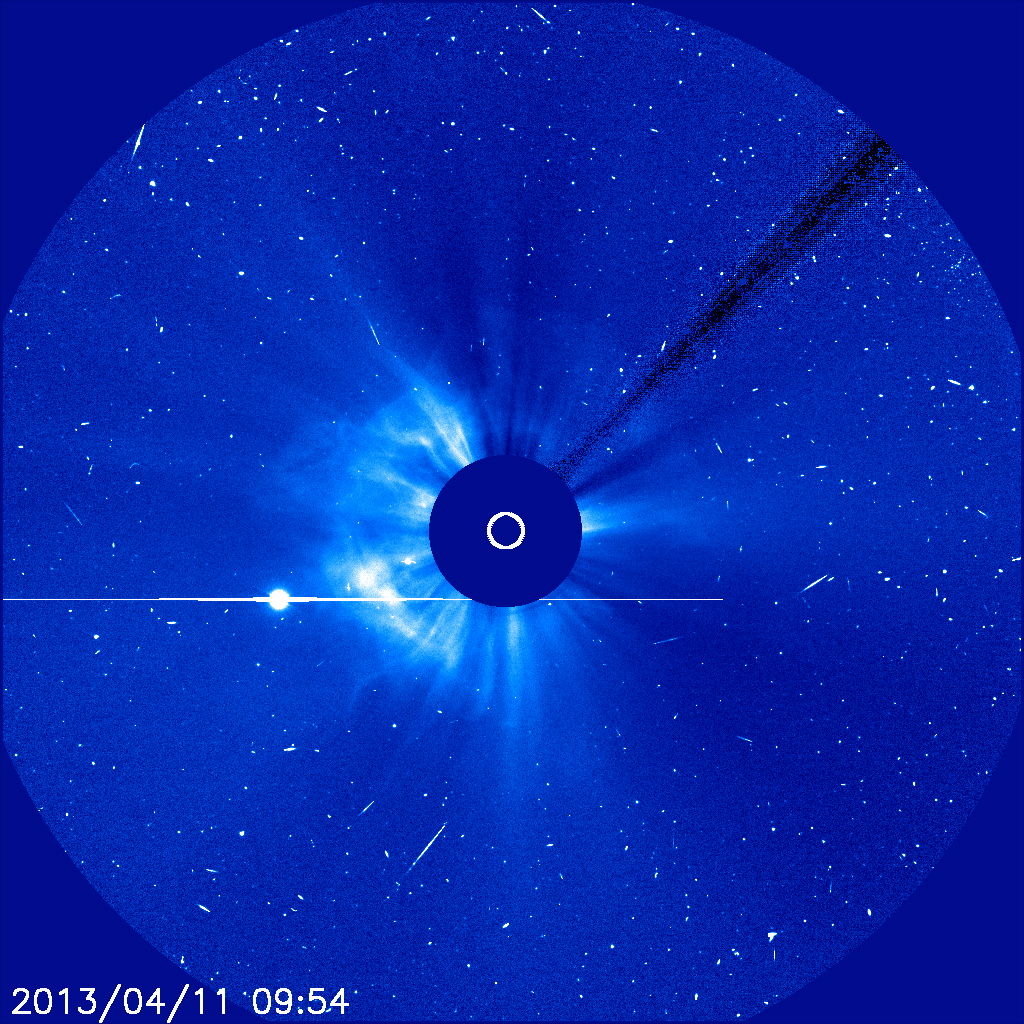What Is a Coronagraph?
Reference Article: Description of a coronagraph and how it's used.

A coronagraph is a specialized instrument designed to block out the light of the sun so that researchers can glimpse the burning star's hot, thin, outermost layer, called the corona. The French astronomer Bernard Lyot invented the coronagraph in the 1930s, according to the American Museum of Natural History, and the instrument has since found many other uses.
The sun's corona is normally visible only during solar eclipses, when the moon's shadow covers the bright central layers of our parent star and allows its dimmer corona to appear. A coronagraph mimics this natural phenomenon with a circular mask that sits inside a telescope and selectively blocks the bulk of the sun's light.
More recently, the development of a new class of coronagraph has allowed scientists to directly view light from distant exoplanets. Planetary companions are often between a thousand and a billion times fainter than the stars they orbit, making it nearly impossible to image them without blocking light from the overpowering star.
The specialized coronagraphs act as filters on the central star, allowing the tiny fragments of planetary light to shine through. It is a painstaking process to separate out the star and exoplanet light, which come in at slightly different angles due to their separation in space. Along with the coronagraph masking the starlight, a deformable mirror often helps clear up the blurry planetary images so that they come through looking like dots.
Related: New Tech Could Help Astronomers See Planets Around Alpha Centauri
Direct imaging of exoplanets can give astronomers vital information about these alien worlds' compositions. Light that passes through an atmosphere will contain telltale clues about the atmosphere's chemistry, so researchers can find out if a world contains things like water, methane, oxygen or carbon dioxide.

Examples of coronagraphs
Using a coronagraph, the Keck telescope on Mauna Kea in Hawaii has watched baby planets forming from dust surrounding a star. Scientists are also hoping to use a space-based telescope carrying a coronagraph to one day capture the light from planets around the nearest star to our sun, Alpha Centauri.
A gigantic, flower-like filter known as a starshade works essentially the same way as a coronagraph, except that it floats outside a telescope rather than sitting within it. For a space-based observatory, a starshade could fly about 25,000 miles (40,000 kilometers) in front of the telescope, allowing astronomers to spot Earth-size alien worlds that otherwise would be lost in a star's glare. Researchers have already designed a starshade that could be used with NASA's upcoming Wide Field Infrared Survey Telescope (WFIRST), which is expected to launch in the next decade.
Traditional coronagraphs also continue to find work in important research. NASA's STEREO-A spacecraft, which orbits the sun between Earth and Venus, uses a traditional coronagraph to monitor space weather and spot finely detailed streamers, blobs and puffs popping out of the sun's corona.
Additional resources:
- Check out this short video explaining how a coronagraph works, from NASA.
- Here's another explanation of how a coronagraph works, from NASA's Solar Terrestrial Relations Observatory.
- Watch this video and learn how to make your own coronagraph, from the National Solar Observatory.
Join our Space Forums to keep talking space on the latest missions, night sky and more! And if you have a news tip, correction or comment, let us know at: community@space.com.
Get the Space.com Newsletter
Breaking space news, the latest updates on rocket launches, skywatching events and more!

Adam Mann is a journalist specializing in astronomy and physics stories. His work has appeared in the New York Times, New Yorker, Wall Street Journal, Wired, Nature, Science, and many other places. He lives in Oakland, California, where he enjoys riding his bike. Follow him on Twitter @adamspacemann or visit his website at https://www.adamspacemann.com/.










